Read about Landmarks Illinois’ major advocacy efforts and projects around the state that made headlines during 2018. LI thanks all its local partners, on-the-ground advocates, members and supporters for helping us save important places this year. We hope you will join us in 2019 for our continued efforts preserving historic sites in Illinois!
Top Preservation News of 2018
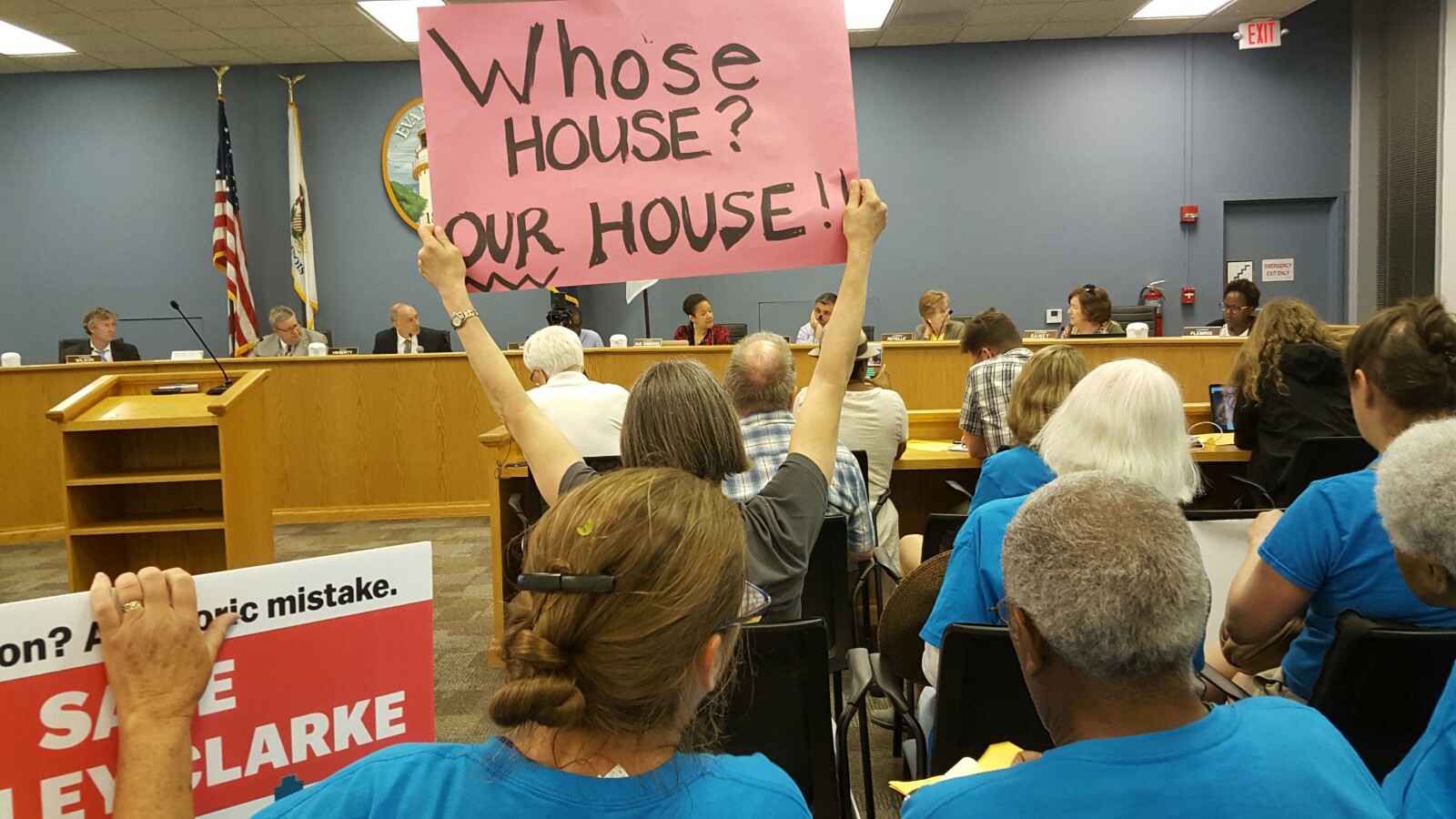
Harley Clarke Mansion: EVANSTON
Landmarks Illinois’ preservation advocacy efforts for the Harley Clarke Mansion in Evanston date back to 2015, before including the locally designated and National Register-listed landmark on its 2016 Most Endangered Historic Places in Illinois. However, the future of the city-owned building on Evanston’s lakefront was put in the spotlight in 2018 as city officials took major steps toward demolition despite widespread public support for preservation. LI’s preservation advocacy efforts, as a result, jumped into high gear this year.
LI President & CEO Bonnie McDonald and Director of Advocacy Lisa DiChiera have testified at public meetings throughout 2018, written numerous letters to city officials, met and strategized with local advocates and partner organizations, advised with legal experts and brought in historic building experts to confirm Harley Clarke’s viability for reuse.
In 2016, LI provided pro-bono to the city a WJE-conducted condition assessment on Harley Clarke. In October, LI gathered more than 30 professional experts to testify at a Preservation Commission meeting on Harley Clarke’s architectural and cultural significance, as well as its stable and repairable condition. The Commission voted unanimously at that meeting against the city’s request to demolish the 1927 building.
In a surprise vote earlier this month – influenced by a successful November referendum where more than 80% of voters supported preservation – the City Council decided not to appeal the Commission’s decision. This was despite the offer of funds by a small group of private citizens to financially support demolition. The vote, for now at least, signals the city will not pursue demolition and will reevaluate next steps.
LI will continue to work with local advocates and partners, as it has done so for years, to ensure the preservation of this local and national landmark and to find viable reuse solution.
Read more in the news:
Evanston’s Harley Clarke Mansion Saved by Council
One Illinois, December 11
State Partnership Could Spare Harley Clarke Mansion: State Reps
Evanston Patch, October 6
City Manager Signs MOU With Evanston Lighthouse Dunes
Evanston Roundtable, September 5
Wake up, Evanston leaders. You’ve got a treasure on your hands. Don’t demolish the Harley Clarke Mansion.
Chicago Tribune, June, 24
Raising Questions, Questioning Razing an Evanston Landmark
Evanston Roundtable, June 13
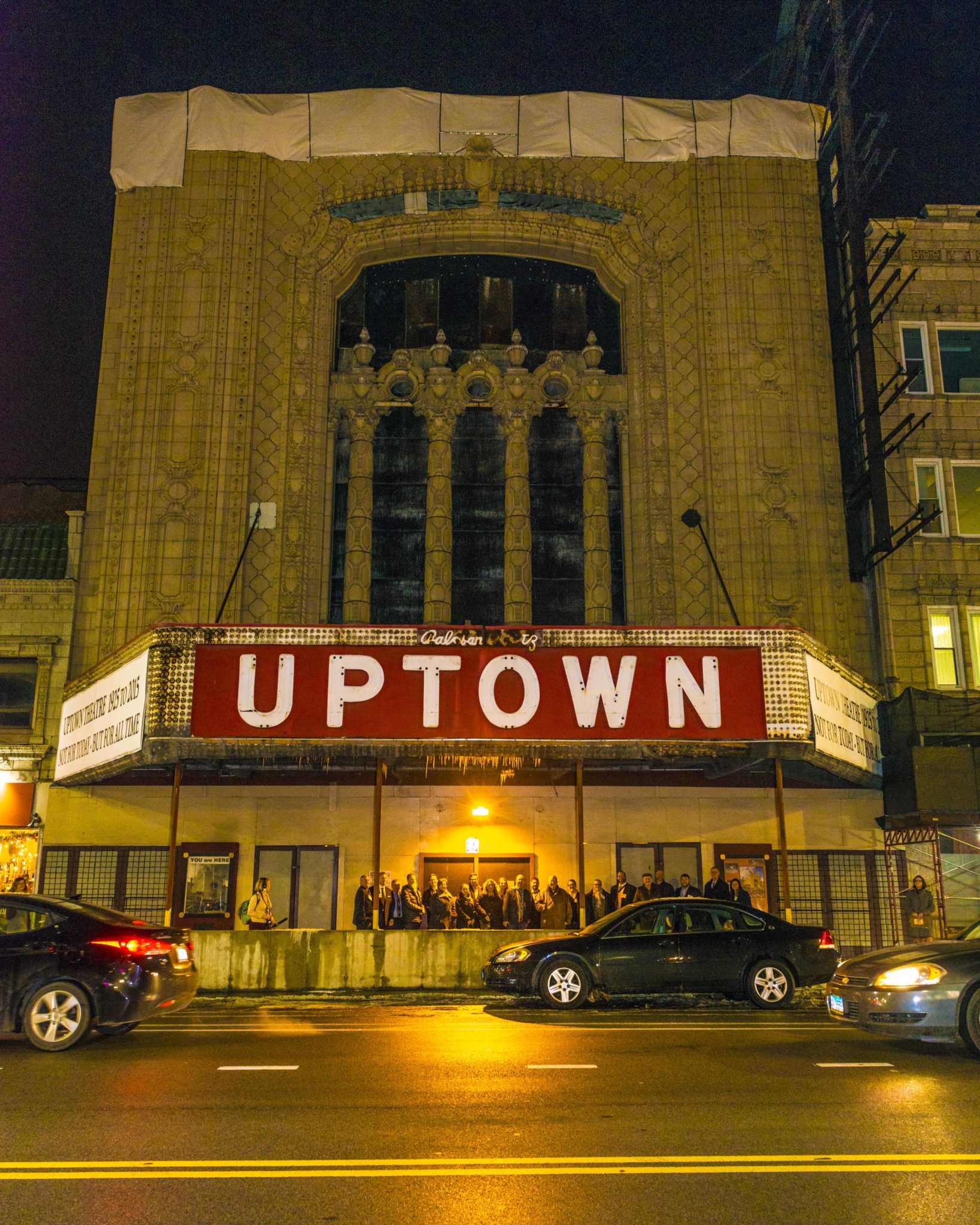
Uptown Theatre: CHICAGO
Landmarks Illinois has advocated for preserving the 1925, Rapp & Rapp-designed theater for over 20 years. The building was included on LI’s Most Endangered Historic Places in Illinois four times between 1996 and 2014, and LI representatives have made numerous appearances in building court on the theater’s behalf over the past two decades.
Leading the estimated $75 million Uptown Theatre rehabilitation is theater owner Jam Productions and Farpoint Development. LI’s ongoing commitment to campaigning for the federal historic tax credit program and the creation of a state historic tax credit program was critical in knowing projects like the Uptown Theatre will depend on these incentives.
Landmarks Illinois teamed up with Jam Production and Farpoint in November to host a unique event for LI’s Real Estate & Building Industries Council members and supporters, offering event guests a rare tour inside the impressive landmarked theater that closed in 1981. Tentative plans call for the restoration project to be complete and the theater to reopen by early 2021.
Read more in the news:
Uptown Theatre Owner Looks To Restore Former Glory
WBEZ, November 29
Community Development Commission signs off on $75M Uptown Theatre restoration
Chicago Sun-Times, November 13
Why the Uptown Theatre Restoration is a Big Deal
Chicago Magazine, July 5
Chicago’s legendary Uptown Theatre to come back to life
The Architect’s Newspaper, July 2
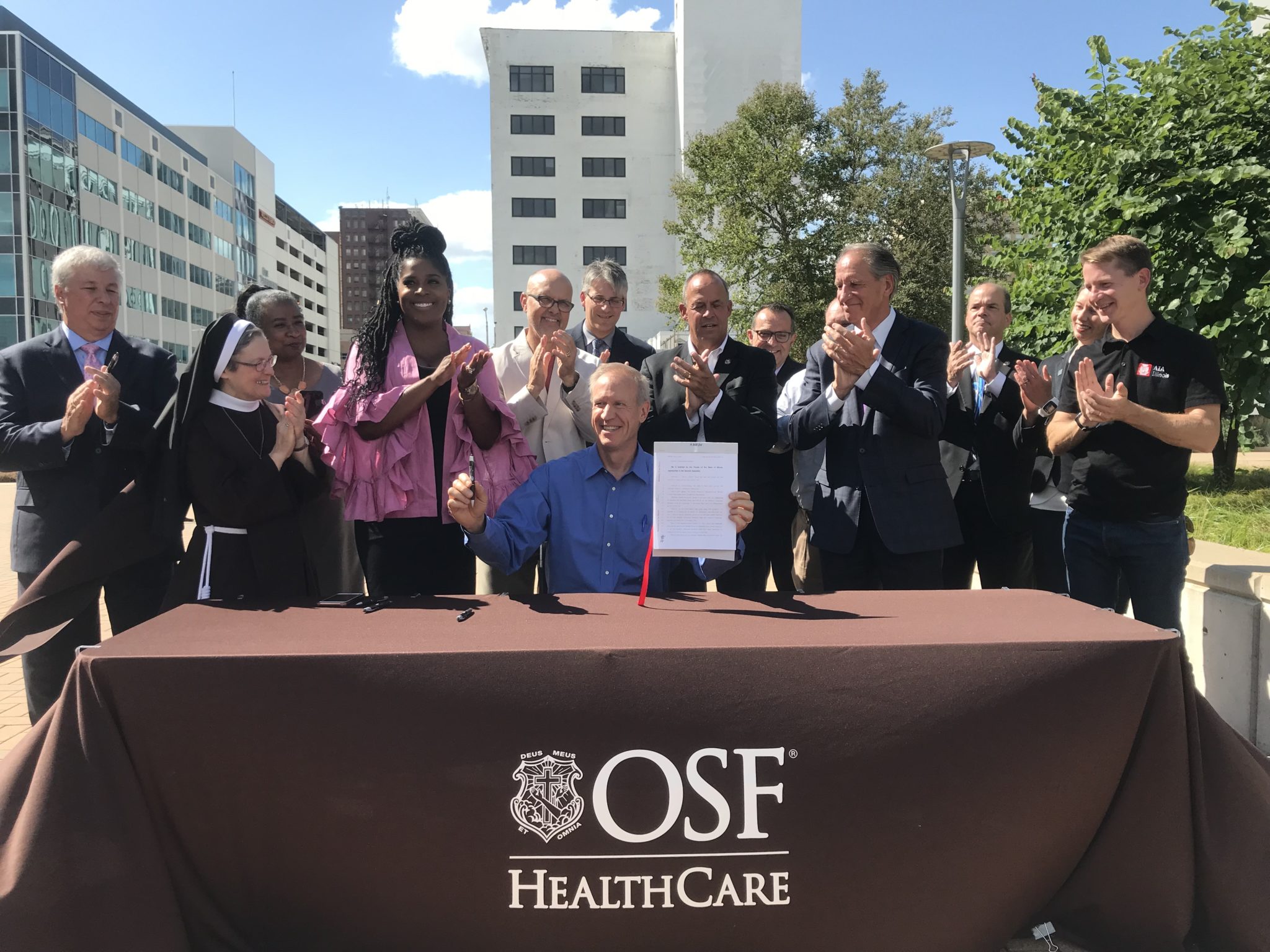
Historic Preservation Tax Credit: STATEWIDE
After years of advocating for state historic tax credit legislation, working with legislators, providing testimony, research and expertise, Landmarks Illinois was ecstatic to share the news in June that the Illinois General Assembly passed a bill creating a statewide Historic Preservation Tax Credit, which was signed into law in July.
The new law, passed with nearly unanimous support, expanded and improved the existing River Edge Redevelopment Zone Historic Tax Credit (RERZ) and opened up this vital incentive to communities across the state.
The legislation was authored by primary sponsors Rep. Jehan Gordon-Booth (D-Peoria) and Sen. Steve Stadelman (D-Rockford) – two of the Illinois legislators LI honored at the 2018 Landmarks Illinois Richard H. Driehaus Foundation Preservation Awards in September.
Beginning in 2019 in application rounds held by the State Historic Preservation Office, the Historic Preservation Tax Credit Act will provide a state income-tax credit equal to 25% of a project’s qualified expenditures to owners of certified historic structures who undertake a certified rehabilitation. Read more about the new statewide historic preservation tax credit here.
Read more in the news:
B-N officials optimistic about tax credits for historic sites
The Bloomington-Pantagraph, July 28
Historic tax credits expanded statewide
Illinois Times, June 14
New state historic preservation tax credit could be boon for developers
The Real Deal, June 4
Column: A small win for preserving the past: General Assembly backs an expansion of state tax credit
Chicago Tribune, June 1
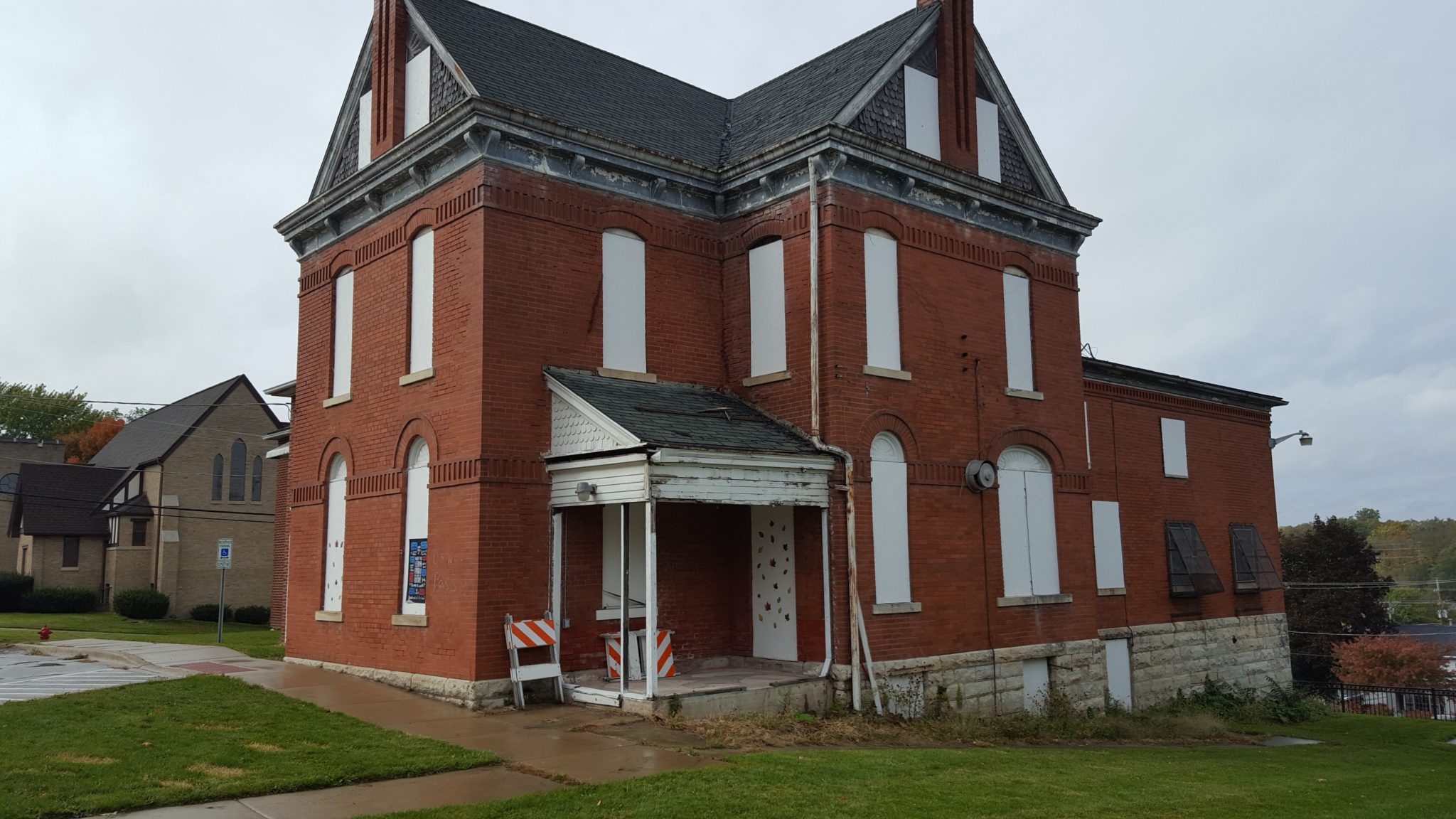
Old Kendall County Residence & Jail: YORKVILLE
Landmarks Illinois has worked with Yorkville city officials this year to market the former Kendall County Sheriff’s Residence & Jail for rehabilitation and reuse, avoiding demolition of the historic and unique property.
In October, Yorkville City Council twice decided to delay a vote on demolishing the former residence and jail, included on LI’s 2003 Most Endangered Historic Places in Illinois when it was owned by Kendall County. The next month, the city issued a request for proposal (RFP) for the sale of the site for those interested in purchasing and rehabbing the property.
Landmarks Illinois has assisted the city by providing building experts who have confirmed the structural stability of the old residence and jail and provided information on financial incentives for the RFP to attract a preservation-minded buyer. Additionally, Director of Advocacy Lisa DiChiera has advised local advocates and city staff on potential reuse scenarios for the old sheriff’s residence and jail, which has helped to save the structure from demolition at this time.
The building is eligible for the National Register of Historic Places, and therefore, a potential buyer could take advantage of the 20% Federal Historic Preservation Tax Credit as part of a redevelopment project and apply for the 25% statewide historic tax credit set to take effect in 2019. TIF assistance from the City of Yorkville is available as well. The city is accepting RFPs for the site until March 26, 2019.
Read more in the news:
Our View: One more chance for the old county jail
Kendall County Now, November 21
Yorkville City Council considers future of former county jail
Kendall County Now, March 9
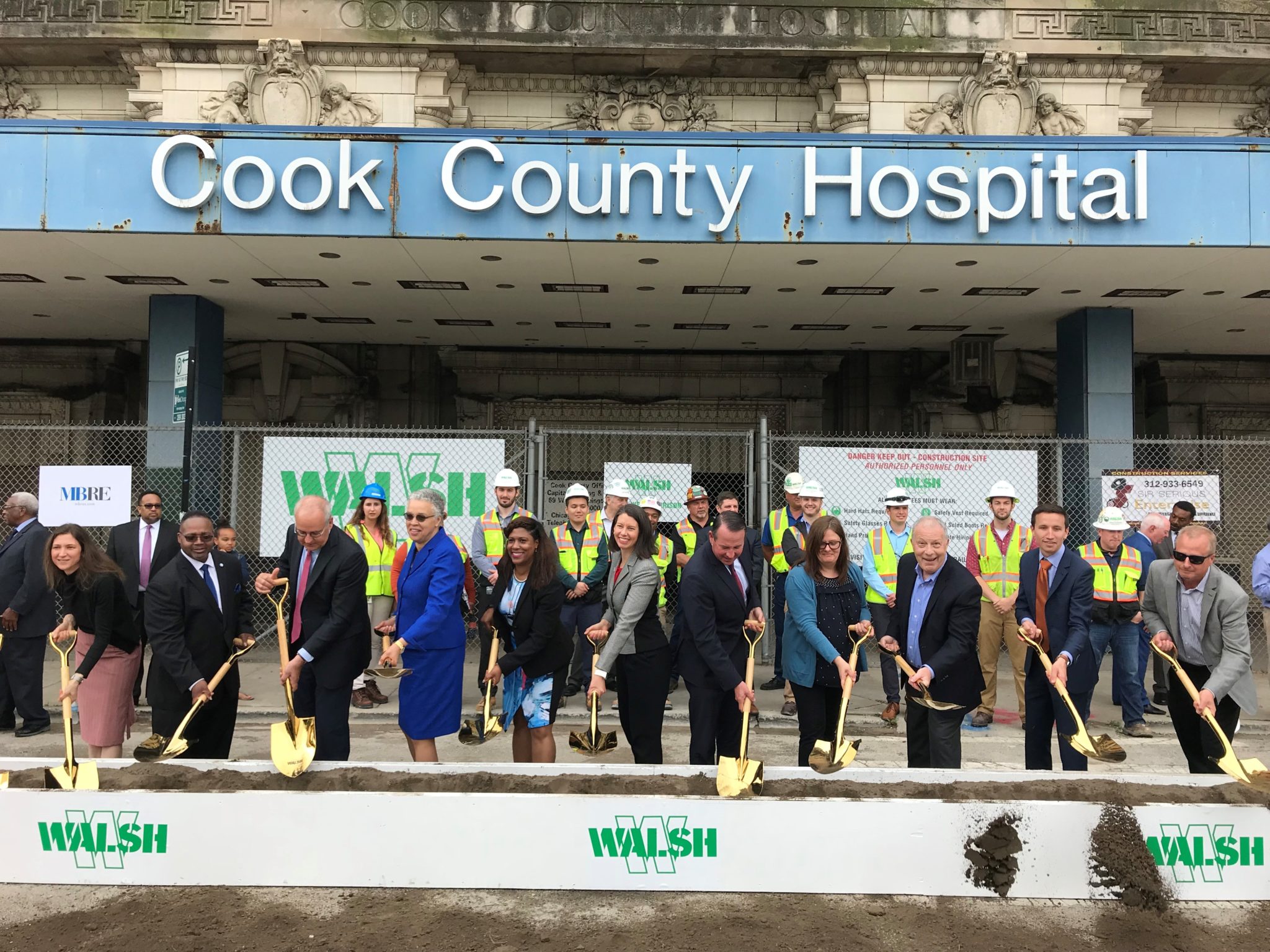
Old Cook County Hospital: CHICAGO
Landmarks Illinois has advocated for the reuse of the Old Cook County Hospital for nearly 20 years, and in 2018, Cook County announced a developer would undertake a massive rehabilitation and redevelopment project for the eight-story Beaux-Arts building originally constructed in 1914. In June, the development team and public officials broke ground on the redevelopment project, expected to transform the long-vacant and long-threatened former hospital, listed on the National Register of Historic Places.
LI first called attention to Old Cook County Hospital by including it on its Most Endangered Historic Places in Illinois in 2001, a year before it was vacated. It again included the building on its Most Endangered list in 2003, 2004 and 2005. In 2003, LI delivered to county commissioners a comprehensive reuse plan designed by Antunovich and Associates and again in 2016 as part of a county sponsored charrette that helped lead to the current redevelopment plan.
LI was excited to be part of the groundbreaking event to celebrate this major preservation project in Chicago, which will take advantage of federal historic tax credits. The building will transform into a mixed-use development, including a 210-room hotel, Cook County medical office space and retail space. LI will honor the developer, Murphy Development Group, at its 2019 Legendary Landmarks Celebration.
Read more in the news:
A look inside ‘old’ Cook County Hospital’s $145M facelift
WGN, November 7
Cook County Hospital hotel conversion lands $90M interior build-out permit
Curbed Chicago, August 13
Historic Cook County Hospital restoration and redevelopment breaks ground in Chicago
The Architect’s Newspaper, June 15
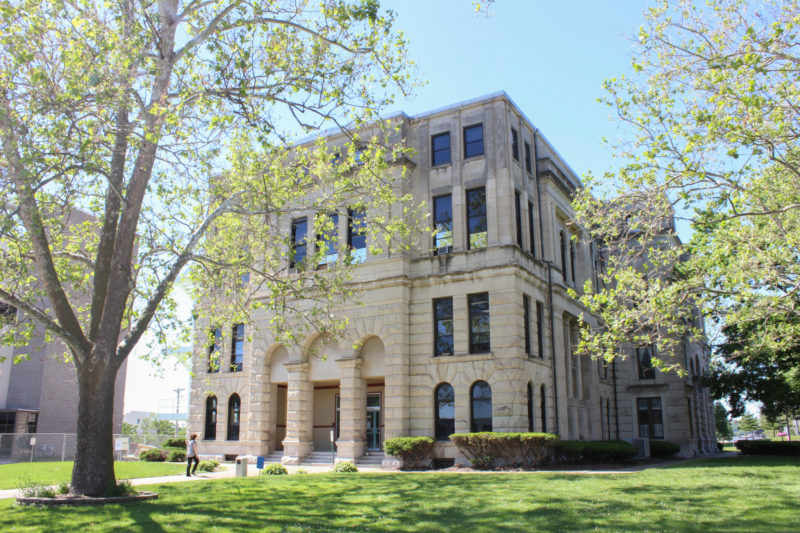
Rock Island County Courthouse: ROCK ISLAND
Landmarks Illinois included the Rock Island County Courthouse on its 2018 Most Endangered Historic Places in Illinois, and has continued to be heavily involved throughout the year in the fight to save the 1897 structure, which was determined eligible for inclusion in the National Register of Historic Places.
During 2018, Rock Island County officials have continued to pursue a path to tear down the courthouse, recently approving a demolition bid and moving existing county offices out of the building into the newly constructed Justice Center Annex.
In November, however, Landmarks Illinois brought attention to a potential regulatory issue with demolition, and Director of LI’s Springfield Office Frank Butterfield sent a letter to the State Historic Preservation Office (SHPO). The letter established that the proposed courthouse demolition is part of the overall Justice Center Annex project, and thus should be subject to state review. In response, SHPO notified local officials that it has reopened the regulatory review process and that the demolition plans need to be submitted for review.
With the development community expressing interest in the building, Landmarks Illinois is advocating for a process to transfer the building to the private market for reuse.
Read more in the news:
Efforts to save courthouse continue as demolition bids are considered
Dispatch Argus, November 29
County board votes to tear down courthouse
Dispatch Argus, July 17
Letter: Don’t raze courthouse, explore reuse
Dispatch Argus Letter to the Editor, May 20
Editorial: Enough dithering; RICo leaders, do your duty
Dispatch Argus Letter to the Editor, May 20

James R. Thompson Center: CHICAGO
For the second year in a row, Landmarks Illinois included the James R. Thompson Center on its Most Endangered Historic Places in Illinois in 2018. In doing so, it joined a small handful of historic sites LI has named more than once to its annual Most Endangered list, demonstrating the significant threat the one-of-a-kind Postmodern building faces.
LI continues to call attention to the state-owned Thompson Center, constructed in 1985 and designed by noted architect Helmut Jahn, as the state still considers vacating and selling the building in an effort to make up for state budget shortfalls. However, unlike other past repeat Most Endangered sites, Landmarks Illinois took its advocacy efforts to a new level this year for the Thompson Center. In conjunction with the 2018 Most Endangered announcement, LI released renderings that visually demonstrated a possible reuse scenario for the Thompson Center that also accommodates a new tower. The renderings, which were created in conjunction with Jahn and visualizedconcepts, show how the building in the heart of Chicago’s Loop could be privately redeveloped as an exciting mixed-use destination and still allow a developer to capitalize on the site’s zoning, which enables a new super tower.
As Chicago Tribune Architecture Critic Blair Kamin wrote in November, preservationists experienced a “sense of relief, if only a temporary one” when the state announced it would not seek to sell the building in 2019. As the state’s future plans for the building remain unknown, LI will continue to advocate for the building, which is Chicago’s best example of grand-scaled, Postmodern architecture.
Read more in the news:
Sale of Chicago’s iconic Thompson Center delayed through 2019
The Architect’s Newspaper, November 21
Preservationists push to landmark Helmut Jahn’s postmodern Thompson Center
Curbed Chicago, September 26
Ambitious Thompson Center reuse visualized in new renderings from Landmarks Illinois
Curbed Chicago, April 26
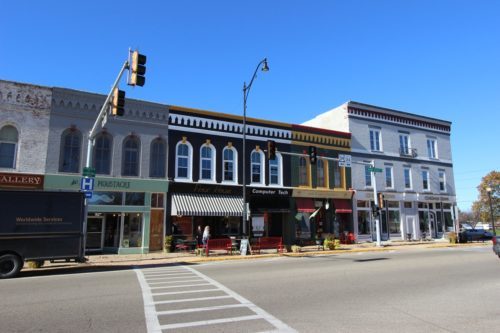
National Register Historic Districts: PRINCETON
In January 2018, the National Parks Service announced it had added Princeton’s two downtown districts to the National Register of Historic Places. It was welcomed and celebrated news at the start of the New Year, and followed a long effort by Landmarks Illinois and the City of Princeton to receive national recognition for the community’s historically significant downtown areas.
Since 2016, Landmarks Illinois has been on hand in Princeton, providing assistance, resources, expertise and guidance where needed to list the downtown district. In the summer of 2016, for example, LI awarded the City of Princeton a grant through its Barbara C. and Thomas E. Donnelley II Preservation Fund for Illinois to support Phase 1 of a feasibility study of the North Main Street Business District, a project that consisted of a one-day assessment and analysis of the historic and cultural resources by a team of preservation professionals and the compilation of an illustrated report.
The following year, LI was awarded a generous grant from the Richard H. Driehaus Foundation, which allowed LI to continue working with Princeton to preserve its historic resources and cultural heritage. Frank Butterfield, LI’s Springfield Office Director, attended numerous public meetings in 2017 to discuss tax incentives and other benefits of a National Register District and also led educational sessions in Princeton to help local residents, property and business owners as well as community leaders understand what such a listing would mean for the city.
LI has been proud to partner with Princeton residents and city officials in the successful effort, and featured Princeton’s ongoing preservation work in a session at PastForward, the National Trust For Historic Preservation’s annual conference held in San Francisco this November.
Read more in the news:
First comes National Register, next comes tax credit benefits
Bureau County Republican, March 6
Princeton’s business districts recognized
Bureau County Republican, January 23
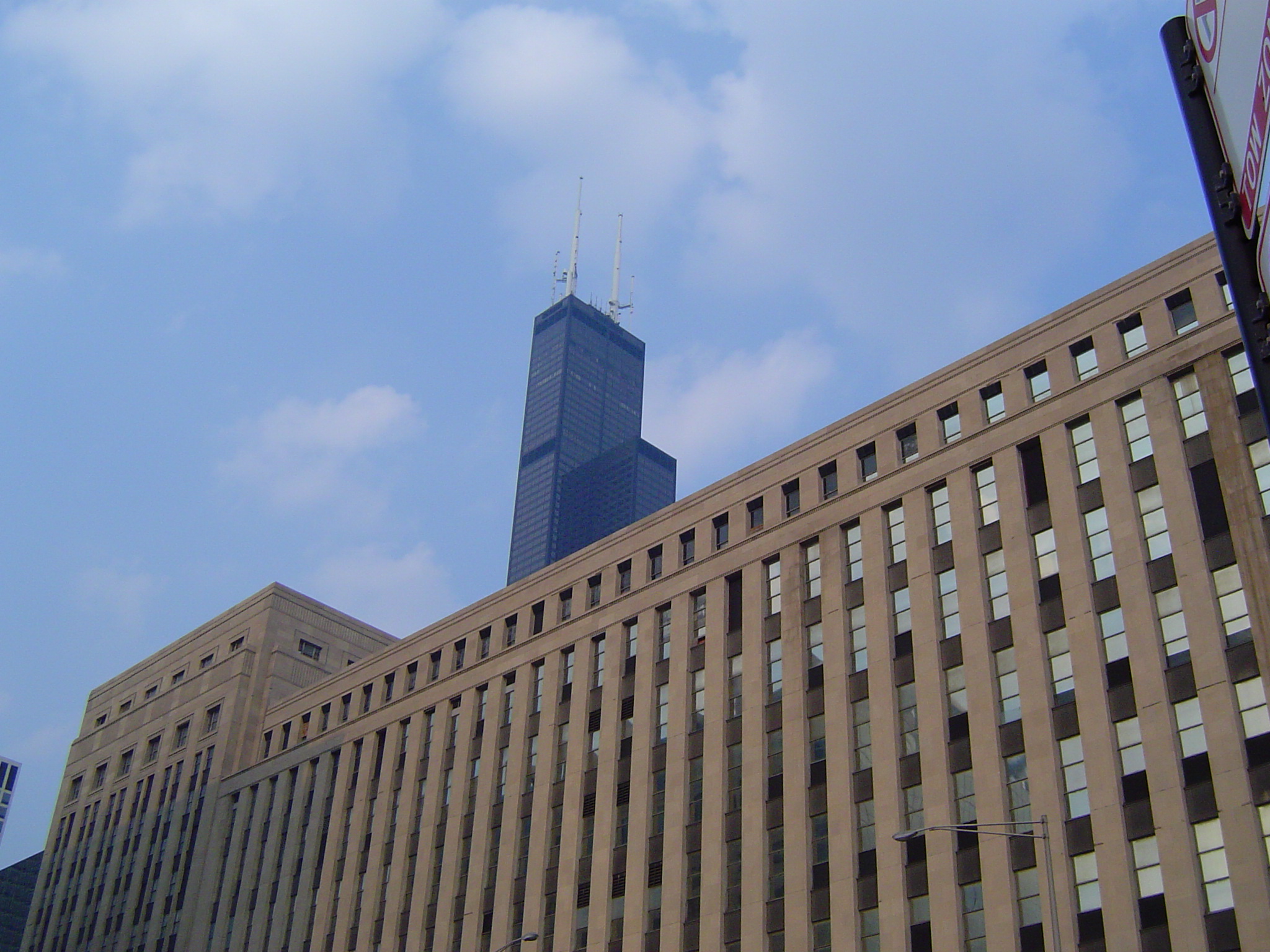
Old Main Post Office: CHICAGO
Another massive building in Chicago that has long sat vacant experienced positive steps toward preservation in 2018 – the Old Main Post Office.
In April, the City of Chicago officially designated the building a Chicago Landmark, a move that recognized the architectural and historic significance of the 2.5 million-square-foot, Art-Deco-era structure and granted an extra layer of protection. The landmark designation also provides other economic incentives for the building’s new developer and owner, 601W Companies. The original structure was designed by Graham, Anderson, Probst & White and built in 1921, with additions constructed in 1932. The massive building straddles the Eisenhower Expressway and is an iconic entry point into the Loop.
Later this year, Walgreens announced it would move 1,800 employees to a redeveloped 200,000-square-foot space inside the former post office. Walgreens became the first tenant to commit to leasing space inside the historic structure. Just last week, Ferrara Candy announced it would move its headquarters to the Old Main Post Office.
Landmarks Illinois included the Old Main Post Office on its 1997 Most Endangered Historic Places in Illinois and has continued over the last two decades to advocate for its significance and reuse potential. As with Uptown Theatre and Old Cook County Hospital, the federal historic tax credit is a critical financing tool for this complicated redevelopment.
Read more in the news:
The Old Main Post Office: Before and After
Chicago Magazine, July 28
19 million letters a day! How old main post office used to work
Chicago Tribune, June 22
Peek inside Old Main Post Office, Emanuel’s hopeful future business hub
Chicago Sun-Times, June 19
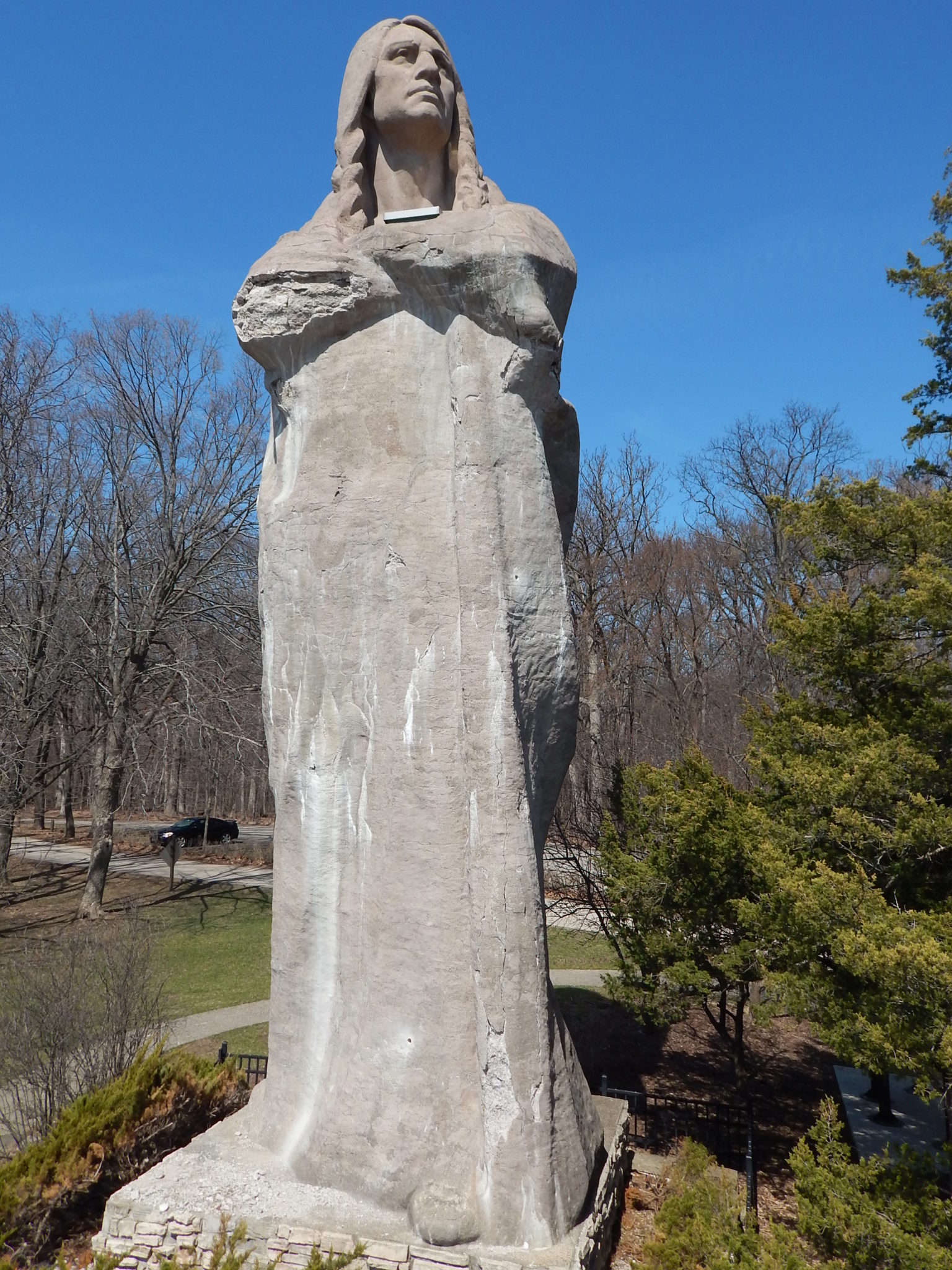
Black Hawk Statue: OREGON
The Black Hawk Statue in Oregon, also known as the Eternal Indian, has been suffering deterioration for many years with a lack of funding needed to preserve it. Finally in 2018, it was announced that enough money had been raised through various fundraising efforts to officially begin the long-need repairs to the statue, which was designed by noted Chicago sculptor Lorado Taft and dedicated in 1910. Fundraising and preservation efforts through the year were a group effort including local and state entities, demonstrating a shared commitment to saving the 48-foot-tall statue that overlooks Lowden State Park.
Landmarks Illinois included the statue on its 2015 Most Endangered Historic Places in Illinois and has provided legislative advocacy and technical support throughout this campaign. In September, it was announced that work to complete repairs on the many cracks and chips to the Black Hawke Statue would begin in spring 2019. It was set to be wrapped for the winter to protect it from the elements until work can begin.
Read more in the news:
Black Hawk restoration goal met
Rochelle News-Leader, October 6
Plans and paperwork progress for Black Hawk statue repairs
Ogle County News, June 29
$500K needed to restore of Oregon’s Eternal Indian statue
Rockford Register Star, May 15
Past efforts to restore Illinois’ crumbling Eternal Indian statue have fallen apart. Will this time be different?
Chicago Tribune, November 24
TOP FACEBOOK POST OF 2018: MAY 2, 2018
Support our advocacy
Be a voice for the future of our communities by supporting Landmarks Illinois. Our work enhances communities, empowers citizens, promotes local economic development and offers environmentally sound solutions.
